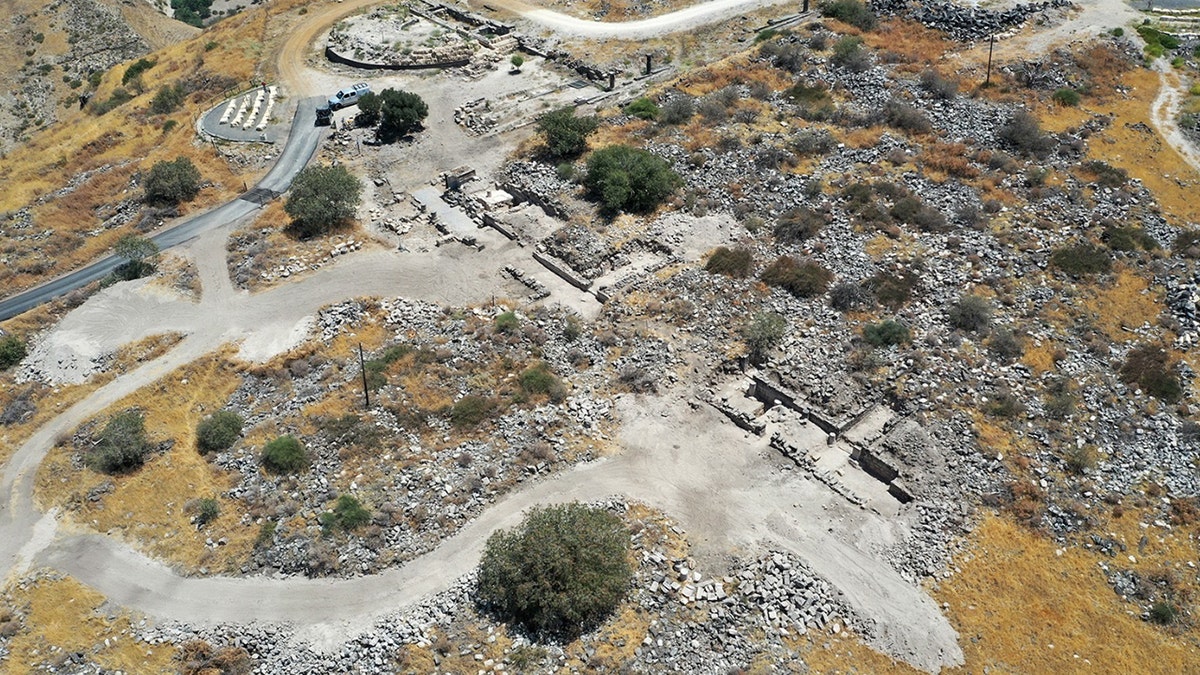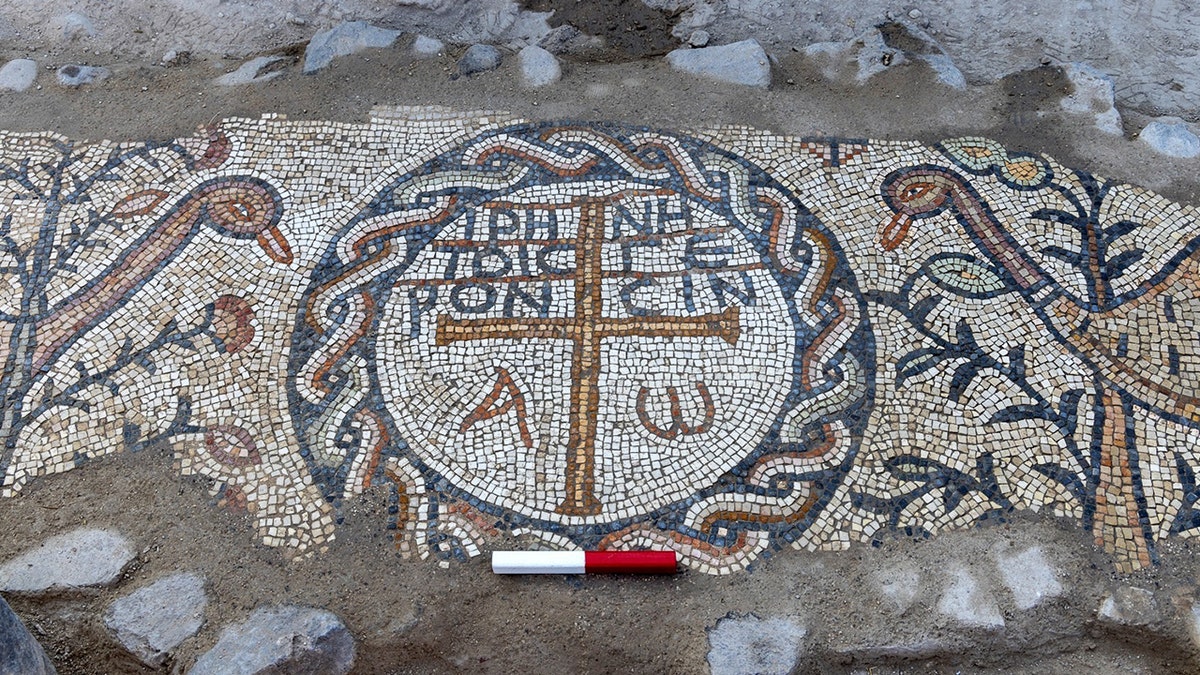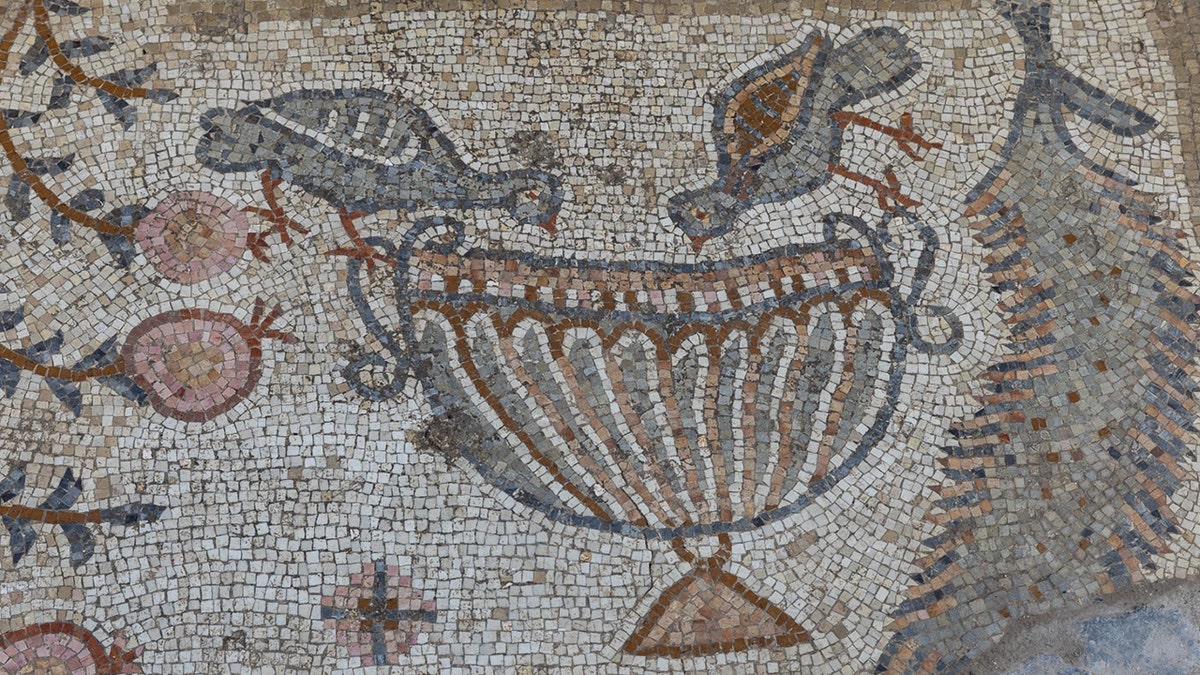Ancient mosaic has revealed 1,600-year-old elderly care facility discovery
NEWYou can now listen to Fox News articles!
Archaeologists in Israel have uncovered a 1,600-year-old Christian care facility for the elderly – a remarkable find that may be the world’s oldest nursing home.
The news, reported by Israel’s news agency TPS-IL, was announced by the University of Haifa on Aug. 18.
The care facility was found in the ruins of the ancient city of Hippos near the Sea of Galilee. The Christian city was a significant bishop’s seat in the region during the Byzantine era.
LUXURIOUS 1,700-YEAR-OLD ROMAN BATHHOUSE UNEARTHED BY ARCHAEOLOGISTS AFTER SURPRISE DISCOVERY
While excavating the ruins, archaeologists from the University of Haifa’s Zinman Institute of Archaeology were struck by a floor design at the entrance of an ancient building.
The mosaic’s message read, “Peace be with the elders,” in Koine Greek. It was found around 320 feet from Hippos’ central plaza, inside one of the city’s residential blocks.

Archaeologists in Israel uncovered a 1,600-year-old Christian care facility near the Sea of Galilee. (Dr. Michael Eisenberg of the Zinman Institute of Archaeology and the Department of Archaeology at the University of Haifa/TPS-IL)
Dating back to the fourth or fifth century A.D., archaeologists are convinced that the building was a designated facility for older residents.
“It shows that Byzantine society established not only religious centers but also places dedicated to dignity and care for its seniors.”
Some sources from the fifth and sixth centuries record the existence of elderly care facilities, making the discovery unique but not entirely without precedent. The inscription may also be the first physical evidence of such an institution.
ANCIENT CHRISTIAN TOMB COMPLEX REVEALED BENEATH RUBBLE FROM SYRIA’S CIVIL WAR
Researchers posit that the message was intentionally placed at the entrance of the building, in order to designate its purpose to elderly residents and visitors.

Archaeologists say the Greek inscription, reading “Peace be with the elders,” offers rare insight into Byzantine life. (Michael Eisenberg, Ph.D., of the Zinman Institute of Archaeology and the Department of Archaeology at the University of Haifa/TPS-IL)
The symbols on the mosaic – cyrpress trees, fruit and Egyptian geese – also complement the Greek text, with researchers interpreting them as deliberate choices.
For example, cypress trees were associated with everlasting life, while fruits symbolized abundance and eternal life. Egyptian geese, on the other hand, often represented blessed souls in ancient iconography.
CLICK HERE TO SIGN UP FOR OUR LIFESTYLE NEWSLETTER
Directly referencing elders in such a manner is exceptionally rare in ancient inscriptions, underscoring the significance of the find.

The mosaic’s imagery, including cypress trees, fruit and Egyptian geese, symbolized eternity and abundance. (Michael Eisenberg, Ph.D., of the Zinman Institute of Archaeology and the Department of Archaeology at the University of Haifa/TPS-IL)
In a statement, Michael Eisenberg, Ph.D., said that the mosaic “offers a tangible, dated, and clear indication of an institution designed for the elderly.”
“This is living proof that care and concern for the elderly are not just a modern idea, but were part of social institutions and concepts as far back as about 1,600 years ago,” Eisenberg observed, according to TPS-IL.
For more Lifestyle articles, visit foxnews.com/lifestyle
He added, “It shows that Byzantine society established not only religious centers but also places dedicated to dignity and care for its seniors.”

“The inscription addresses a specific public directly, which is a rare glimpse into older lives in antiquity,” the team said. (Michael Eisenberg, Ph.D., of the Zinman Institute of Archaeology and the Department of Archaeology at the University of Haifa/TPS-IL)
The research team, which published its findings in the Journal of Papyrology and Epigraphy, stressed that the discovery offers “a rare glimpse into the daily lives of older people in antiquity.”
“This was a communal and spiritual institution integrated into the fabric of city life and reflecting the social values of the period,” the researchers said in a statement, as TPS-IL noted.
CLICK HERE TO GET THE FOX NEWS APP
“It may provide one of the earliest material testimonies in the Holy Land, showing how the Christian community began assuming responsibilities for care that had previously been handled by family networks alone.”
Source link
editor's pick
latest video
Sports News To You
Subscribe to receive daily sports scores, hot takes, and breaking news!




